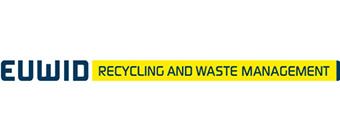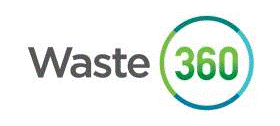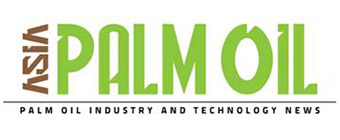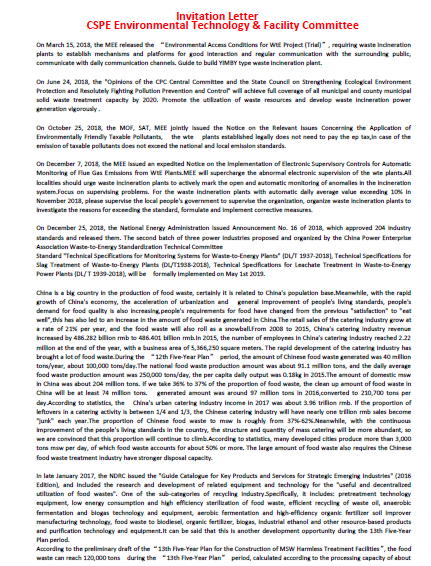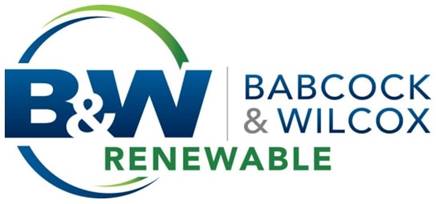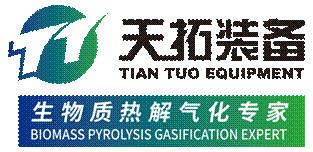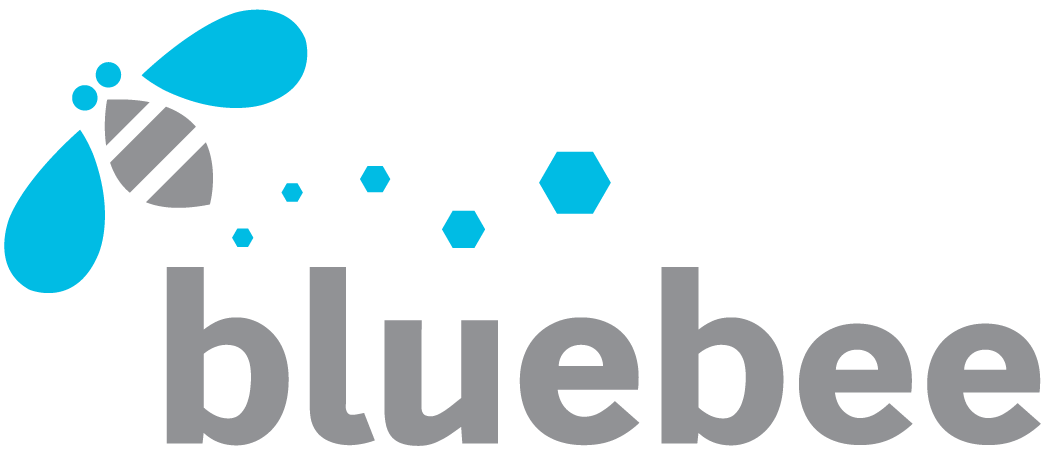600+Global High Level Attendees
60+Renowned High Level Speakers
60+Selected Exhibitors Onsite
30+Local Municipalities
150+Biogas Biomass & WtE Investors and Operators
30+EPCs
15+RDF Producers,Cement Plants
100+Palm oil,Pulp and paper,Sugar mill,Industrial parks,Food & Beverage factory,Textile factory,Plywood veneer factory,Asphalt bitumen plant,Package factory,Feed mill,Coal fired power plants,etc
50+Biomass pellet producers
Broaders solid waste series event was originated from the urban waste incineration power generation technology application seminar held in Shenzhen in 2004. It was held in Tianjin and Shanghai in 2005 and 2006 respectively. It was upgraded to the Asia Waste to Energy Congress in 2012 and moved to ASEAN in 2023 as the ASEAN Waste to Energy Week in Bangkok, Thailand,ASEAN Waste-to-Energy Week 2024 in Saigon Vietnam,Arab League Solid Waste Management Summit 2024 in Cairo Egypt,Asean Biomass Utilization Congress 2024 in BKK Thailand,Asean Solid Waste Management Congress 2024 in BKK Thailand. Asean Biomass Utilization Congress 2025 in KL Malaysia,Asean Solid Waste Management Congress 2025 in KL Malaysia. The conference attracted more than 5,500 delegates from more than 80 countries and regions including China, United States, France, Sweden, Austria, Finland, Norway, Iceland, Denmark, Poland, Czech Republic, Germany, Austria, Switzerland, Russia, Ukraine, United Kingdom, Ireland, Netherlands, Belgium, Italy, Spain, Portugal, Thailand, Japan, Singapore, South Korea, Malaysia, Australia, India, Indonesia, Philippines, Vietnam, United Arab Emirates,The Kingdom of Saudi Arabia,The Kingdom of Bahrain,Egypt,South Africa,The Kingdom of Morocco, Iran,The Islamic Republic of Pakistan,Bangladesh,Lebanon, Canada, Sri Lanka, South Africa, Hong Kong, Taiwan, Macau etc attended the conference. Previous participants have visited Beijing Lujiashan Shougang Biomass Waste Incineration Power Plant in 2014, Suzhou Everbright Waste Incineration Power Plant in 2015, Shanghai Environment Laogang Waste Incineration Power Plant in 2016, Shenzhen Energy Yantian Waste Incineration Power Plant in 2019, Guangzhou Third Resource Thermal Power Plant in 2021,Shenzhen Energy Longgang Energy Ecological Park in 2021,Bangkok BMA C&G Waste-to-Energy Power Plant in 2023,Everbright International's Can Tho Waste-to-energy Project in Vietnam in 2024.Thailand Chonburi Clean Energy Power Plant in 2024.Malaysia Sulpom Integrated Biomass-Based Cogeneration Power Plant in 2025,Berjaya EnviroParks,one of Malaysia's largest sanitary landfills,msw incineration plants,hazardous waste incineration plants in 2025.
Asia Waste to Energy Congress 2012 was held successfully in Pullman Shanghai Skyway Hotel from 15th-16th Nov 2012
2nd Annual Asia Waste to Energy Congress 2013 was held successfully in Pullman Shanghai Skyway Hotel from 24th-25th Sep 2013
3rd Annual Asia Waste to Energy Congress 2014 was held successfully in Renaissance Beijing Capital Hotel from 22nd-23rd Oct 2014
4th Annual Asia Waste to Energy Congress 2015 was held successfully in Pullman Shanghai Skyway Hotel from 24th-25th Sep 2015
5th Annual Asia Waste to Energy Congress 2016 was held successfully in Pullman Shanghai Skyway Hotel from 28th-29th Sep 2016
6th Annual Asia Waste to Energy Congress 2017 was held successfully in Pullman Shanghai Skyway Hotel from 30th Nov-1st Dec 2017
7th Annual Asia Waste to Energy Congress 2019 was held successfully in Saint Regis Shen Zhen Hotel from 28th Jun-29th Jun 2019
8th Annual Asia Waste to Energy Week 2021 was held successfully in Four Points Sheraton Guang Zhou Hotel from 27th-28th Sep 2021
Inaugural Asia Hazardous Waste Treatment Congress 2016 was held successfully in Pullman Shanghai Skyway Hotel on 27th Sep 2016
2nd Asia Hazardous Waste Treatment Congress 2017 was held successfully in Pullman Shanghai Skyway Hotel on 28th-29th Nov 2017
3rd Asia Hazardous Waste Treatment Congress 2018 was held successfully in InterContinental Nanjing Hotel on 26th-27th Sep 2018
4th Annual Asia Hazardous Waste Treatment Congress 2019 was held successfully in The Sofitel Nanjing Galaxy Hotel on 7th-8th Nov 2019
5th Annual Asia Hazardous Waste Treatment Congress 2020 was held successfully in Hilton Jinan South Hotel on 24th-25th Sep 2020
Asia Food Waste Treatment Congress 2019 was held successfully in Saint Regis Shen Zhen Hotel on 26th June 2019
ASEAN Food Waste Treatment Congress 2023 was held successfully in Hilton Sukhumvit Bangkok Hotel on 16th Oct 2023
Asean Waste to Energy Week 2023 was held successfully in Hilton Sukhumvit Bangkok Hotel on 18th-20th Oct 2023
Asean Waste to Energy Week 2024 was held successfully in Pullman Saigon Centre Hotel on 14th-16th Mar 2024
Arab League Solid Waste Management Summit 2024 was held successfully in Fairmont Nile City Cairo Hotel on 27th Jun 2024
Asean Biomass Utilization Congress 2024&Asean Solid Waste Management Congress 2024 was held successfully in Eastin Grand Hotel Sathorn Bangkok 27th-28th Nov,2024
Asean Biomass Utilization Congress 2025&Asean Solid Waste Management Congress 2025 was held successfully in
Courtyard by Marriott Kuala Lumpur South Hotel 28th-29th Apr,2025
The Broaders 26th Edition Solid Waste Series Event Will be Scheduled on 23rd-25th Sep 2025 in Indonesia 2025
Asean Biogas Congress 2025 (ID)Event Background
The biogas industry in Indonesia has been growing since 2010,Operational cost efficiency is a major driver of anaerobic digestion (AD) deployment as well as the Clean Development Mechanism (CDM) incentive and the certification provided by the International Sustainability and Carbon Certification (ISCC) system. The government has provided tariff regulations,initially with feed-in-tariffs, then the Electricity Generation Cost(BPP)- based tariff, and later the electricity ceiling tariff with a location factor3. Currently, so far this has not led to high levels of investment in AD, and the full potential of AD in Indonesia is yet to be fully realised.
In association with The Long-Term Strategy for Low Carbon and Climate Resilience 2050 (LTS-LCCR 2050) sets out the targets and goals of climate mitigation and adaptation in Indonesia. For biogas specifically, the GeneralPlan of National Energy states that by 2025, biogas capacity should be 489.8 million m3 per year. Policy in Indonesia presents a global opportunity for the biogas industry. Currently, one biogas upgrading plant is online, and another set to come online soon several other plans for future AD plants.
Biogas in Indonesia is categorised into two types of plants based on scale: communal/household scale and industrial scale. Communal scale biogas plants generally use manure and human excrement as feedstock while the industrial-scale plants utilise more diverse feedstocks, though are mainly fed by palm oil mill effluent (POME),tapioca mill wastewater, and manure.Current biogas capacity is 28.39 million m3/year amounting to only 5.8% of the 489.8 million m3/year target by 2025.Of this, small scale household biogas accounted for 26.72 million m3/year and was largely funded by the state (APBN), donors (Hivos), Special Allocation Funds (DAK) and other private enterprises.There are 78 industrial scale AD plants currently in operation with 161.6 MWe of capacity (53% captive utilisation, 37% excess power and 10% for independent power producers).83% of all feedstocks used in Indonesia is derived from POME,15% from tapioca wastewater and 1% from manure.
The biogas industry is currently driven by palm oil production, tapioca production and agricultural waste. Indonesia is the world��s largest palm oil producer and exporter with a total production of 48.3 million metric tons in 2020. To that end, Indonesia is home to more than 850 palm oil mills, 60 tapioca mills and 29 industrial scale animals farms that are mostly located on the Sumatera and Kalimantan Islands16.
If all waste from these mills were used for electricity generation,potential electrical capacity from these plants are from these plants is approximately 1.1 GWe, 153 MWe and 36 MWe respectively 17.
POME is a highly polluted wastewater from palm oil production, which is a hot, acidic, and has a high concentration of organic matter of around 60,000 mg/L18. When POME decomposes, it releases methane so by treating wastewater through AD, large methane savings can be made. While 41.5 million tonnes of palm oil are produced from Indonesia annually, currently,less than 10% of palm oil mills have AD
plants and one has a bio-compressed natural gas (bio-CNG) plant19.Potential energy generation from all POME is 1.1 GWe17, yet only 130 MWe is currently installed, therefore the palm oil industry has large market expansion potential.Indonesia is the world��s fourth-largest producer of tapioca, producing nearly 20 million tonnes per annum (tpa). To date, there are 60 tapioca mills in Indonesia producing more than 45 tonnes of tapioca starch per day. Around 80% of tapioca mills are on Sumatra Island, particularly in the Lampung Province. It is estimated that 40�C60 m3 of wastewater is generated to produce one ton of tapioca starch.Tapioca wastewater has a high organic content between 10,000 �C12,000 mg/L21, meaning it has significant potential as a feedstock for the biogas market. Total capacity potential from the tapioca industry is 142 MWe17, yet only 29MWe are installed currently.With at least 17.5 million cattle in Indonesia, there is great potential for anaerobic digestion using livestock waste, especially manure.The amount of animal manure that could be obtained from cattle,sheep and chickens annually is estimated to be 257,911 tpa, 34,979 tpa,and 364,156 tpa respectively. Therefore, capacity of the AD from the livestock sector could be 525 MWe, while simultaneously addressing environmental issues of odours and flies. However, since most livestock farms are dispersed widely and usually small scale, only industrial scale livestock rearing is feasible for AD. This has a potential capacity of 36 MW.The Food andAgriculture Organisation estimate that citizens in Indonesia waste 77 kilograms of food per year, equating to 20 938 252 tpa23. About 70% of this is disposed of by open dumping in more than 380 landfill sites, only a small percentage is going to sanitary landfills or being recycled and reused24. The potential capacity for AD from municipal food waste is 1.055 GW.
Indonesia Sustainable Palm Oil (ISPO)37: encourages palm oil companies to reduce GHG emissions and embed sustainable practice by introducing the mandatory Indonesian Sustainable Palm Oil Certification System. Within this, it is recommended to have a POME waste treatment facility for further processing and energy generation.Electricity Buying and Selling Policy: The Excess Power Scheme (EPS)38 and the Independent Power Producer (IPP)39 schemes two trading mechanisms designed to make renewable energy production cost competitive. The Acceleration of Renewable Energy Development for Electricity Supply40, released in September 2022, includes a ceiling tariff and location factors for both the EPS and the IPP. The difference between EPS and IPP is the contract period which only for minimum 3 years for EPS and 20 years for IPP. This regulation is expected to have better biogas development compared to previous regulation, which set the purchase price of electricity from bioenergy power plants as a maximum of 85% of the local electricity generation cost.PT Pertamina, Indonesia��s national oil and gas company has committed to begin biomethane injection from their plants in 2023.
Indonesia has a large potential for biogas, but the market is still developing. Regulatory issues that have hampered the AD industry include persistently high fossil fuel subsidies meaning that biogas is comparatively costly and has unattractive selling prices.Small-scale biogas has the potential to bring energy to the 50 million people. Community-scale AD is already commonplace in Indonesia so with proper planning, it could be implemented widely.Moreover, industrial-scale biogas can help to reduce the reliance on imported fossil fuels through the Diesel Power Plant Conversion. Furthermore, the immense potential of the palm oil, tapioca, and livestock industries to capitalize on production waste as feedstock should not be underestimated by investors seeking confidence in the market. AD can either lower costs through self-sustaining the plant or generate profits by selling electricity either privately or through government support schemes.
As a major agricultural exporter, Compressed Biomethane Gas (CBG) is a crucial renewable energy source to meet Indonesia��s escalating energy demand and decarbonize various sectors.
To encourage private sector involvement, the project will set up a Biogas Guarantee Facility (BGF). The proposed BGF will provide three financial instruments: a concessional loan, a credit guarantee and an offtake guarantee. The concessional loan will be provided to small and medium scale project to cover 70% of the upfront costs. The BGF will offer a 10-year concessional loan at 6% interest, allowing project developers to access cheaper financing and accelerate investment. The BGF loan guarantee is open to all project developers that have applied for a guarantee from commercial banks and covers 70% of the loan. Finally, the BGF will guarantee 70% of the expected off-take for 10 years.
The Technical component will focus on the enhancement of regulatory environment and stakeholder coordination, capacity development and awareness raising for relevant stakeholders. Proposed measures include developing regulations supporting CBG utilization, injection into the national grid, streamlining licensing processes, redirecting subsidies to the biogas industry, and securing a sustainable flow of funds for the BGF by reallocating tax levies on palm oil exports. The BGF envisions shifting the energy sector toward a carbon-neutral path, with replicable sustainable risk-sharing mechanisms.
The Indonesia biogas market is valued at 149 megawatts, based on a five-year historical analysis. This market is primarily driven by the rising demand for renewable energy sources and Indonesia's governmental incentives for clean energy projects. The increasing need to manage waste efficiently, particularly in urban areas, has further pushed the adoption of biogas as a sustainable energy source. The countrys growing focus on waste-to-energy projects and technological advancements in biogas production processes also plays a crucial role in boosting the markets expansion.
Indonesias biogas market is dominated by regions such as Java and Sumatra. Java is the economic hub of the country, and its dominance in the biogas market is due to the high population density, significant industrial activities, and concentrated agricultural waste that can be efficiently converted into biogas. Sumatra, with its vast agricultural land, contributes heavily to the biogas market due to the availability of biomass and other organic waste materials. The high level of industrial and agricultural activities in these regions ensures a steady supply of feedstock for biogas plants.
Indonesia's government is strongly promoting renewable energy initiatives to meet its national energy policy goal of generating 17-19% of energy from renewables by 2025. As of 2024, Indonesia offers significant tax incentives and subsidies for biogas plants. For example, the Ministry of Finance introduced tax holidays that allow investors to receive up to a 100% reduction in corporate income tax for 5 to 20 years, depending on the size of the project. Additionally, the governments budget allocation for renewable energy infrastructure has grown, reaching IDR 20 trillion ($1.3 billion USD) in 2024, supporting projects that enhance energy security through biogas development.
Indonesias biogas market is segmented by feedstock type into agricultural waste, animal manure, industrial wastewater, municipal solid waste, and food waste. Agricultural waste is currently the dominant feedstock due to Indonesia's strong agricultural sector, particularly in regions such as Sumatra and Java. The presence of rice husks, palm oil residues, and other crop residues provides a consistent source of feedstock for biogas production. The abundance of these waste materials, combined with governmental support for renewable energy, has led to the strong dominance of agricultural waste in the market.
The market is segmented by application into electricity generation, heating, transportation fuel, and bio-methane injection into the grid. Electricity generation is the most dominant application of biogas in Indonesia, as it offers an immediate solution to meet the countrys growing energy demands, especially in rural and off-grid areas. The Indonesian governments initiative to increase rural electrification through renewable sources has significantly boosted the use of biogas for electricity generation. Additionally, biogas plants serve as a reliable backup energy source for small industries and households, further enhancing the growth of this segment.
Key Features
Overview of Indonesia biogas industry policies and regulations
How to plan design and execute succesful biogas project from the plan to the full scale production
Discover new tools and policies to make sure your project is bankable
The latest technological advancements in biogas to biomethane upgrading
Challenges and opportunities faced by biogas producers
The latest solutions ensuring the safety of biomethane production and transportation
Grow your business, your network and your network of equipment and service provider
Increase your depth of knowledge in technology, and new business strategies
Asean Biomass Utilization Congress 2025 (ID)Event Background
As part of reaching net-zero by 2060, Indonesia plans by 2025 to produce energy from renewables as much as 23 percent. This renewable energy is contributed by biomass (6 percent).From the many sources of renewable energy, the government has created a plan to increase the proportion of biomass in generating electricity. Biomass is considered renewable because its source is from replantable trees, which at the same time absorb carbon.Indonesia, as one of the biggest producers of wood products, clearly has a huge potential to utilize its energy forestry and wood waste as a source of biomass such as wood chips and wood pellets. From that perspective, Indonesia has an abundant amount of potential to use biomass as one of substitutes for fossil fuels. However, the development and utilization of biomass as an energy source is still very small compared to its potential.Globally, the biomass market has been on the rise with major developed countries in Asia, such as South Korea and Japan, have significantly increased their usage of biomass as their source of energy generation. South Korea has been the main importer of Indonesian wood pellets with a share of 88 percent followed by Japan with 11 percent.
The Indonesian National Energy Policy stipulates that renewable energy must contribute 23% of total energy consumption by 2025 and increase to 31% by 2050. Among many resources of the country, biomass is a renewable energy source whit the potential is estimated at 32,654 MW. Currently, the biomass electricity generation technology that has been applied in Indonesia includes direct combustion as fuel for coal power plants or co-firing, converted into refuse-derived fuel, gasification, sanitary landfills, and incinerators. From 2011 to 2019, the installed capacity of biomass power plants reached 1857.5 MW or 33.78% of the target of 5500 MW in 2025. The biomass power plants are located in North Sumatra, Jambi, Gorontalo, Riau, West Nusa Tenggara, Papua, Bangka Belitung, North Sulawesi, South Sumatra, East Java, and Jakarta. Considering the high 2025 electricity from biomass target, it is necessary to develop a more intensive biomass power plants because of its large potential, available technology, and its benefits to increase the electrification ratio especially for providing electricity for people in areas not yet covered by the utility network, realizing national energy security, and reducing the use of fossil-based fuels.
Indonesia state power utility PT PLN is committed to continuously support the government's efforts to reduce carbon emissions and increase economic growth through support for clean energy supply, with biomass energy ecosystem is key in encouraging these efforts.Member of the House of Representatives (DPR), Eddy Soeparno, said that Indonesia, which targets economic growth between 7-8 percent, certainly requires high energy supply support. He, therefore, sees the importance of a national energy ecosystem that relies on diverse and sustainable energy sources, one of which is biomass.He said that in order to support this effort, the House and the government have signed a Government Regulation on the National Energy Policy (RPP KEN) in which one of the contents is related to increasing the utilization of biomass or biofuels . This aims to develop alternative energy sources that are more environmentally friendly.��We have the ability to develop biomass, biofuel. This source can come from energy plantation forests ,�� Eddy said in his presentation at the Indonesian Renewable Energy Society (METI) Green Talk entitled ��Strategies for Assuring Raw Material Supply and Improving the Economy for Biomass Power Plants (PLTBm)�� on Monday, September 30, 2024.
He added that in the RPP KEN , the utilization of biofuel must be done by considering balance, energy security, and food security. Through the right process, this effort will bring a sustainable circular economy for the community, including the environment.��We must mobilize this circular economy. And this requires assistance, support from all relevant stakeholders, including METI,�� he said in a statement as quoted on Thursday, October 3, 2024.Meanwhile, Coordinator for Bioenergy Investment and Cooperation at the Directorate General of New Renewable Energy and Energy Conservation (EBTKE) of the Ministry of Energy and Mineral Resources (ESDM) explained that the Government strongly supports the PLN-METI initiative to continue to increase the utilization of new renewable energy (EBT), especially biomass. The potential of biomass, especially for the electricity sector or PLTBm is quite large, reaching 57 gigawatts (GW).
PLN President Director Darmawan Prasodjo said that the company continues to be committed to supporting the Government in reducing carbon emissions, especially in the electricity sector. One of them is by building a reliable biomass ecosystem to supply power plant needs.PLN builds a biomass ecosystem based on people's economy. In this case we collaborate with the community, local government and related policy makers by utilizing critical lands to supply biomass with an integrated agricultural system,�� Darmawan said.Darmawan explained, until the 3rd quarter of 2024, PLN has utilized 3 million tons of biomass in the co-firing program for 46 Steam Power Plants (PLTU) and succeeded in reducing carbon emissions by 3.2 million tons of CO2e. This biomass utilization also provides economic value to the community of up to Rp2 trillion per year and involves as many as 250 thousand people.��The amount of biomass utilization will continue to be increased to 10 million tons in 2025 to meet the biomass needs of 52 PLTUs owned by PLN,�� he added.
Wiluyo Kusdwiharto, Chairman of METI and Director of Project Management and New and Renewable Energy at PLN, explained that his party has collaborated with state-owned enterprises and the private sector to develop vacant land for energy crops. In addition, it also encourages the utilization of waste as biomass for power generation.Wiluyo also invited all interested parties to collaborate together. Thus, a solid ecosystem can be formed to be able to utilize the huge potential of biomass in the country.��Biomass is a very abundant potential in Indonesia and is one of the energy defense forces. Because the material from biomass has many benefits, it is only a matter of how we utilize it,�� Wiluyo concluded.
Indonesia is ready to become a hub for SAF production, welcoming further investments from both private sector developers and state-owned enterprises (SOEs). Indonesia is blessed by abundant resources and the market potential to become the rightful leader of the regional SAF industry. With abundant feedstocks sufficient to meet domestic and regional demand, and as the largest aviation market in Southeast Asia, Indonesia can leverage these potentials to incubate SAF development and set the trajectory for the region.The good news is that the Office of the Coordinating Maritime Affairs and Investment Minister, in collaboration with public and private stakeholders, is formulating an industrial road map and policy to unlock Indonesia��s potential in the SAF industry, with the goal of positioning Indonesia as the regional SAF industry leader. The SAF strategy will be part of Indonesia��s broader ambition to become the world��s green energy powerhouse as part of the Golden Indonesia 2045 vision. Support and collaborative efforts of all stakeholders are key to ensuring the success of this road map and policy. This landmark initiative for Indonesia��s aviation industry will drive sustainable growth and provide a greener future to all.
Indonesia is mulling to set a sustainable aviation fuel (SAF) mandate of 3% starting from 2026, reports quoted Indonesian energy ministry official Eniya Listiani Dewi as saying in the country��s parliament.
The country also increased the mandatory blending mix of palm oil to 40% from 35% to reduce diesel imports.The government had earlier planned to introduce the mandate in 2027 however the timeline has been moved a little earlier.The country has also announced a SAF National Action Plan 2025-29 laying out the frameworks and steps needed to lift the domestic SAF sector.
A 2025-29 Action Plan includes three main policy pillars of demand, supply and enablers.Notable points under the supply pillar includes securing enough domestic feedstocks for SAF production via the hydroprocessed esters and fatty acids (HEFA) pathway �C which included a proposed domestic market obligation (DMO) for Pfad, and export quota and/or tariff for UCO. Emission-based incentives for SAF and exploring SAF production through other pathways, like alcohol-to-jet, were also mentioned.The country's Ministry of Investment said that the country has potential to produce up to 1.72mn kl of SAF, 8.03mn kl of biodiesel, and 1.76mn kl of bioethanol, based on the Strategic Investment Downstream Roadmap over 2023-2040.Under the enablers pillar, there are plans to appoint a national accreditation body for SAF certification and a domestic SAF certification ecosystem.Under the demand pillar, the country aims to implement pilot SAF offtake agreements for international flights from Ngurah Rai International Airport, and to increase the SAF mandate at Ngurah Rai, the Soekarno-Hatta International Airport, and other major airports. It also plans for an SAF usage mandate for corporate and government travellers.
Indonesia's Coordinating Minister for Maritime Affairs and Investment Luhut Binsar Pandjaitan is eyeing profit of Rp12 trillion (US$742 million) from the sales and exports of sustainable aviation fuel (SAF).
According to the minister, this figure was obtained by calculating the economic value of the production capacity of Pertamina's biofuel refineries.State-owned oil company, Pertamina, is a leader in the field of energy transition and has carried out successful static trials of SAF for use in the CFM56-7B jet engine.In addition, the development of the SAF industry will be an entry point for further investment in biofuel refineries from the private sector and state-owned companies.Indonesia is projected to become the fourth-largest aviation market in the world in the next few decades.
Indonesia will require flights to use sustainable aviation fuel (SAF) in their fuel mix from 2027, the Co-ordinating Ministry for Maritime Affairs and Investment announced. International flights departing Indonesia will be required to use 1pc SAF in their fuel mix, or an estimated 60,000 kilolitres (kl), in 2027. This will rise to 2.5pc by 2030, 12.5pc by 2040, 30pc by 2050, and 50pc, or a projected 7.88mn kl, by 2060.
The country's SAF roadmap and policy action plan was also announced on 18 September, and will be implemented as a Presidential Instruction by September. Used cooking oil (UCO) and palm fatty acid distillate (Pfad) were cited as prioritised feedstocks, although other potential feedstocks like palm oil-based feedstocks, coconut, and seaweed will be explored as well.
Crude palm oil (CPO) was identified as the alternative SAF feedstock that is most widely available within Indonesia, with a current excess supply of 16.5mn t after energy and food use, which can be converted into 13.3mn t of SAF. But SAF produced from CPO is estimated to have life cycle emissions of 77-99 gCO2/MJ, above the International Civil Aviation Organisation (ICAO), US and EU standards, limiting its global marketability. Indonesia aims to establish a taskforce to further engage ICAO on this, over a maximum of two years.
Indonesian firms have taken steps to increase the availability of SAF in the country by importing the SAF from international producers. Towards this,Indonesian state-owned oil and natural gas corporation Pertamina Patra Niaga issued a tender to procure SAF in the first week of August, reports showed.The corporation is seeking to purchase 150 kilolitres of (943 barrels) of neat SAF through iso tanks or 3,500 kilolitres of blended SAF with a 30% neat SAF.Indonesia also produces majority of the key bio feedstocks currently used in production of biofuels including SAF, HVO and renewable diesel around the world.
Meanwhile, Indonesia��s state-owned energy company, PT Pertamina also signed an agreement with European aerospace giant Airbus to explore the development of a SAF ecosystem in Indonesia.Pertamina is already producing SAF via the HEFA pathway and supplied to Virgin Australia Airlines at the Ngurah Rai Aviation Fuel Terminal (AFT) in Bali, Indonesia. PT Pertamina said that the distribution of SAF at Ngurah Rai Airport signifies Indonesia��s commitment to reducing aviation��s carbon footprint.
Indonesian budget carrier Lion Air is planning to use a percentage of sustainable aviation fuel (SAF) on all of its flights by 2030 as part of its commitment to decrease its carbon emissions.
Indonesia`s heating market has witnessed significant growth in recent years, driven by the increasing demand for efficient and sustainable heating solutions in urban and industrial areas. Rapid urbanization ,industrialization and a growing population have led to a surge in the need for centralized heating systems, particularly in densely populated regions and industrial parks with food & beverage factory, palm oil mill, pulp&paper mill,textile factory, plywood veneer factory, asphalt bitumen plant, package factory, feed mill, etc. Government initiatives promoting clean energy solutions and efforts to reduce greenhouse gas emissions have further bolstered the adoption of district heating technologies. This market segment is poised for continued expansion, with opportunities for both domestic and international players to provide innovative and eco-friendly heating solutions.The biomass boilers market in Indonesia is expected to reach a projected revenue of US$ 84.1 million by 2030. A compound annual growth rate of 8.3% is expected of Indonesia biomass boilers market from 2025 to 2030.
Indonesia��s B40 Biodiesel mandate to be implemented gradually.President Prabowo Subianto set an ambitious target to increase the biodiesel blend to B50 or B60. This policy is in line with his vision for energy independence. As the world��s largest palm oil producer and exporter, the B40 policy aims to increase energy independence and reduce fuel imports by up to $20 billion per year.
The ESDM has also decided that Indonesia��s biodiesel output for 2025 will reach 15.6 million kiloliters, a significant increase from the previous year. With an eye on achieving net-zero emissions by 2050, ESDM Minister Bahlil Lahadalia emphasized that by 2026, the biodiesel blend will rise to 50%, a move expected to cut USD 20 billion in annual energy imports and fulfill the country��s goal of energy self-sufficiency.
Key Features
How to establish an economically sustainable integrated industrial chain of "purchasing, storage and utilization" of biomass raw materials, fully realizing the commercialization of biomass energy and increasing its added value
How to attract social investment and increase rural income
How to improve the overall efficiency and economy of the system
Construction of biomass power generation standard system
How to improve technology and explore new models to control pelleting fuel costs
In terms of environmental protection, project scale and initial investment, operational benefits
R&D and promotion of diverse technologies for biomass energy utilization
Development and utilization of active biomass energy
Classify and rationally utilize dry and wet biomass resources, focus on research and development,and prioritize breakthroughs in some key technologies
How to realize the clever collaborative utilization of biomass energy and wind and solar energy
Debate the future of the biomass utilization market with industry leaders
Benefit from technical expertise insight from some of the industry��s leading technology providers
Network and do business with the leading biomass projects owners in the Asean countries
Discover new commercial opportunities in 2027 and beyond
Position your company at the forefront of the emerging biomass industry in the Asean region
Asean Solid Waste Management Congress 2025(ID) Event Background
Indonesia is one of the largest waste producers in ASEAN countries. The Environment and Forestry Ministry recorded that the nation��s waste generation reached 18.99 million tonnes per year in 2022.
At present, waste management is touted as one of the most critical environmental issues in Indonesia. Despite rapidly growing volumes of waste in Indonesia, it remains unmanaged. This leads to health concerns, sanitation, odour issues, and hazardous gas emissions (methane) in the community.Rapid population increase, coupled with increasing urbanisation and industrialisation, is expected to create substantial demand for WtE facilities in Indonesia.
The Indonesian government aims to improve waste management and expand renewable energy. Nearly 60% of waste in Indonesia is not properly managed, with much of it either being incinerated or landfilled, which causes severe environmental pollution. In response, the Prabowo government plans to build waste-to-energy (WTE) plants in 30 cities across the country. These plants aim to manage and reduce waste while providing renewable energy, contributing to the development of the circular economy.
According to data from Indonesia's Ministry of Environment, the country produced a total of 69.9 million tons of waste in 2023, with food waste accounting for the largest share at 41.6%, followed by plastic, wood, paper, and metal. Methane emissions from food waste account for 77% of the greenhouse gas emissions from Indonesia��s food supply chain. Scientists generally agree that methane has a greater impact on global warming than carbon dioxide.
Currently, untreated waste is sent directly to incinerators or landfills in 538 regions or cities across Indonesia, highlighting ineffective waste management practices. In 2017, the government issued a mandate to reduce waste by 30% through recycling, with another 70% to be sorted and processed into raw materials or energy. However, these targets have not yet been met.
On March 12, Yuliot Tanjung, Deputy Minister of the Ministry of Energy and Mineral Resources (ESDM), stated that the government is drafting a new presidential regulation (Perpres) to provide clearer definitions for waste-to-energy technologies. The plan is to implement WTE plants in 30 major cities in Indonesia, adding 20 MW of power to each city starting in 2029.
Government plans to tax waste-to-energy developers.Yuliot explained that there will be two types of WTE plants: one that uses pyrolysis technology to convert plastic waste into fuel oil, and another that uses organic waste to generate biogas or biomass energy.
The Prabowo government expects new laws to boost the development of the WTE industry and plans to tax waste-to-energy developers. The Ministry of Energy and Mineral Resources (ESDM) has already started reviewing the tax regulations, with a possible threshold for taxation set at 1,000 tons of waste processed per day.
In addition to the Ministry of Energy, the Ministry of Public Works has also committed to attracting more private investment into waste management by simplifying regulations and adjusting electricity tariffs for waste-to-energy plants. Future projects will be developed through Public-Private Partnerships (PPP) to alleviate the financial burden on the government.
The Indonesian government has reaffirmed its commitment to supporting the development of waste-to-energy plants (PLTSa) across the country to tackle the simultaneous increase in waste volume and population growth.Coordinating Minister for Food Zulkifli Hasan underscored this commitment during an inspection of the Merah Putih PLTSa and the Refuse Derived Fuel Plant at the Bantargebang Integrated Waste Treatment Site in Bekasi, West Java on March 19, 2025.He noted that relying solely on public education and awareness campaigns would not be enough to keep pace with the rapidly growing waste volume."For that reason, there is no other choice but to utilize technology," he explained.To address this challenge, Hasan highlighted the government��s plan to consolidate three existing presidential regulations into a single comprehensive framework governing waste-to-energy initiatives.The minister stressed the urgency of this effort.He noted that with the regulations merged, investors keen on contributing to the development of a PLTSa would only need to secure a permit from the Ministry of Energy and Mineral Resources (ESDM) before approaching the state-run electricity company PLN to initiate the project."Business actors will no longer need to deal with regional governments, regional representative councils, or the finance minister. They will only require a permit from the ESDM Ministry to sign a contract with PLN," he explained.Hasan also revealed the government's plan to promote the conversion of waste into fuel for the cement and steel industries.
The Ministry of Environment said that the acceleration of the utilization of waste into energy is expected to support waste management efforts in the regions, supported by new regulations on electrification.
Meanwhile, the government is preparing three presidential regulations related to waste management to support the utilization of waste into electrical energy through waste-powered power plants (PLTSa).
Currently, there are PLTSa in 12 cities built based on Presidential Regulation No. 35/2018. However, there are two that are operating, namely PLTSa Benowo in Surabaya, East Java and PLTSa Putri Cempo Solo in Solo, Central Java."PLTSa in other places still have challenges here and there. This is where we want to evaluate, which ones need to be solved," Coordinating Minister for Infrastructure and Regional Development, Agus Harimurti Yudhoyono (AHY), said on Wednesday, March 12, 2025.President Prabowo Subianto has ordered AHY to form an acceleration task force related to infrastructure and elements related to waste processing and handling nationally.The task force will involve a number of agencies such as the Ministry of Public Works, the Ministry of Finance, the Ministry of Environment and the Ministry of Home Affairs.
In a promising step toward sustainable energy, Indonesia is advancing the development of Waste-to-Energy (WTE) power plants, known locally as PLTSa. Coordinating Minister for Food Affairs, Zulkifli Hasan, announced a collaboration with Danantara Investment Management Agency (BPI Danantara) to attract investment and select appropriate technologies for the projects.��Danantara will help assess the technologies and collaborate with investors,�� said Minister Zulkifli, affectionately known as Zulhas, during a press briefing in Jakarta on Friday (April 11). He added that Danantara may also be directly involved in project development, highlighting the strong business potential of converting waste into electricity in Indonesia.Zulhas noted that global interest in WTE projects in Indonesia is growing rapidly. ��Many countries are eager to invest because it��s a viable and profitable solution. In support of this initiative, the government is working to streamline regulations by combining three presidential decrees related to waste management. These include:Presidential Regulation No. 97 of 2017 on national policies and strategies for household waste management,Presidential Regulation No. 35 of 2018 on accelerating the development of environmentally friendly WTE plants,Presidential Regulation No. 83 of 2018 on marine waste management.��We are proposing to merge these three regulations into one unified policy to simplify the process,�� said Zulhas.
The new regulation is expected to ease bureaucratic hurdles and enable the state electricity company, PLN, to purchase electricity generated from waste. The Ministry of Energy and Mineral Resources (ESDM) will also play a key role in fast-tracking permits for these energy projects.��This is an important step in using advanced technology to transform waste into electricity,�� Zulhas concluded.
Key Features
How to shorten the project preliminary examination planning,environmental assessment,feasibility study, approval,land approval,report construction land acquisition,demolition and resettlement coordination time
How to coordinate finance,development and reform,land,planning,environmental protection,legal departments efficiently
How government and investors resolve the conditions for cooperation in fairness and impartiality, major legal risks, and operational maintenance effectively
How to promote the project quickly during a stipulated time frame to avoid any delays and postponement
How to design a YIMBY waste incineration project, process technology, project building standard, waste disposal service fee
How to build safe,high standards, high quality waste incineration power generation project
How to leverage cloud computing, digitization, big data, artificial intelligence, and IoT technologies to improve combustion power generation efficiency and reduce flue gas emissions
Waste incineration power generation projects operational excellent management
Waste incineration power plant equipment fault prediction and maintenance,clean compliance incineration, improve enterprise economic benefits
How to assist waste incineration power plants to treat exhaust gas(hcl sox nox pm dioxin mercury), waste leachate,slag,bottom ash,fly ash
How to assist decision makers in urban msw management departments to sort and collect transport work well
Debate the future of the emerging waste management market with industry leaders
Benefit from technical expertise insight from some of the industry��s leading technology providers
Network and do business with the leading wte projects owners in Indonesia
Discover new commercial opportunities in 2027 and beyond
Position your company at the forefront of the emerging WtE industry in Indonesia
|




























